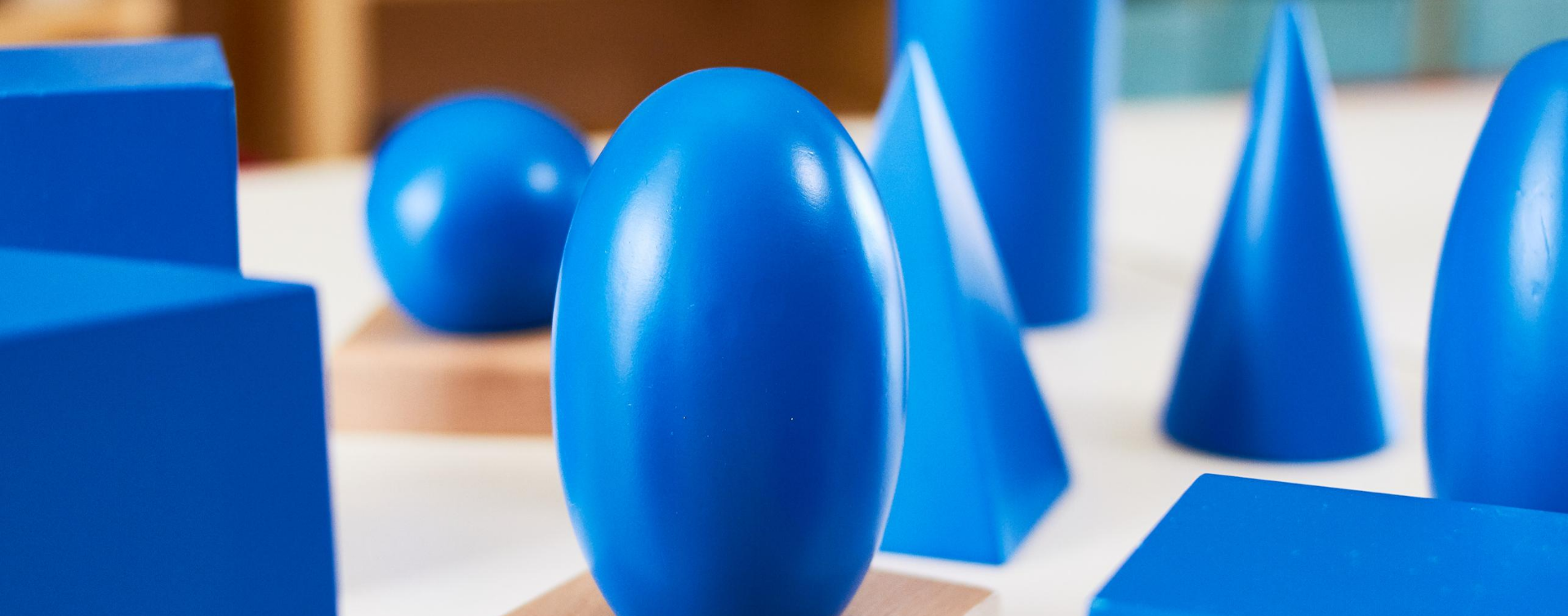This is a material that is greatly undervalued in our Montessori pre and primary schools. There is such a wealth of information to be gleaned from this apparatus, that it should be given centre stage for this week’s material spotlight.
In terms of the presentations with this material, we first give the child an opportunity to feel the solids – often blindfolded or with closed eyes – to absorb the quality of each shape. Smooth sides, straight sides, edges and vertices. This is a stereognostic experience. The word stereognostic comes from the Greek – ‘stereo’ meaning three dimensions and ‘gnostic’ meaning ‘knowledge of’.
Allowing the child to investigate these shapes further by exploring which ones will roll and which do not roll is a concrete way to integrate what the child is seeing to what s/he has already experienced by the stereognostic impression. Some shapes will roll sometimes and not roll other times depending on which face they are placed – for example, the cone.
Next, we bring the child’s attention to the sides of the flat-sided solids and offer her/him the opportunity to match flat shapes to the different sides of the solids. This exercise in looking for similarity and difference exercises the visual discrimination sense of the child. The activity allows the child to discover that some shapes have bases and that curved shapes do not.
Although the names of the solids could be incidentally mentioned throughout these above-mentioned exercises, the last lesson in this series would be to use a three-period lesson to learn the names of the shapes.
This material has a wealth of indirect preparation opportunities for literacy, numeracy and KUW, right up to the primary level.
- Literacy – letters are shapes. The awareness of curved sides, straight edges and vertices are an indirect preparation for the visual discrimination required to learn letter shapes.
- Numeracy – counting the sides, edges and vertices is a good opportunity to practice sequence of numbers.
- Further geometry – incidental naming of the sides of the three-dimensional shape is a good preparation for work with the geometric cabinet.
- Knowledge and Understanding of the World – primary-aged children can go into a study of Plato and Archimedes, Greek philosophers who classified solids in special ways.
We hope that you will revisit these materials with fresh eyes and bring their true worth to your Education of the Senses area!



